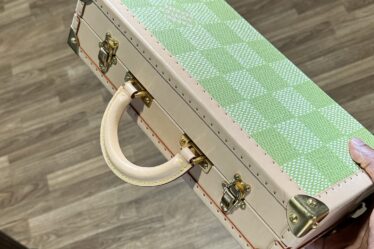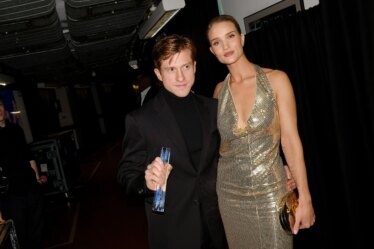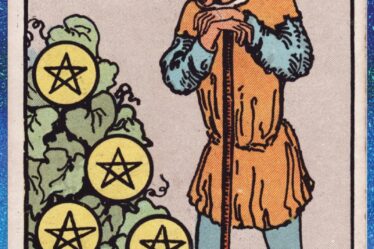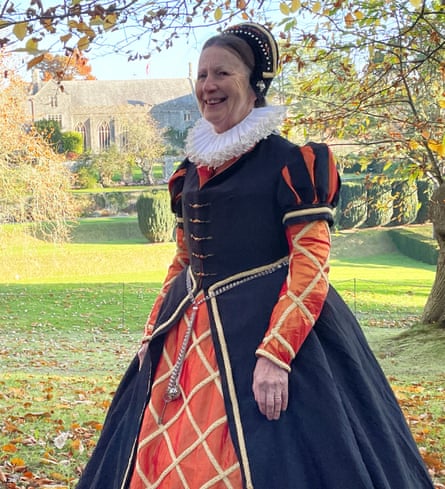
Rosemary Griggs has had two retirements, she says. Her first adventure, after retiring from the civil service at 55, was when she and husband, David, “did the sort of thing you would never advise your kids to do”: they bought a wooden house on stilts on 20 acres of rainforest in Belize (where David had worked for the Foreign Office). They also travelled extensively around Central America. But when David experienced a period of poor health, Griggs says: “That globetrotting bit of life came to an end.” Her “second retirement” has involved a very different kind of adventuring, through history, and in the guise of a Tudor noblewoman.
Back home in Devon, Griggs says, “it soon became clear that pottering in my garden and tending my allotment would not be enough for me”. When she was 63, she started volunteering at a nearby National Trust property, Compton Castle, and as part of her work there was invited to get involved with making a Tudor costume. Despite not having done any dressmaking since school, she agreed.
Her initial attempts to create a 16th-century costume were, she says “not particularly historically accurate”. She used patterns, but was unhappy with the result: “I started to do a bit more digging.” That, however, is something of an understatement: she followed an online course on the history of royal fashion and read extensively around the subject. She also ventured into social media, discovering a supportive, friendly community of people fascinated by and expert in reproducing historical clothing. “My son said: ‘Mum, you’ve got to be a bit careful – are you sure you want to do this?’ But I have to say it’s been brilliant.” And now, while she’s active on Twitter and Instagram, Griggs also shares her discoveries and creations on her own website.
There was a huge amount to learn: the outfits of wealthy 16th-century women were a complex assembly of elements: shift, full skirt and outer gown, with separate, elaborate sleeves, underpinnings and accessories. Re-creating these clothes involves a lot of detective work, trying to work out what was worn and how, when historical records on this kind of day-to-day detail of women’s lives are slim to nonexistent: “It’s a bit like experimental archaeology, I suppose: trying it out and seeing what works.”
But Griggs’s costume-making research provoked a deeper interest in the history of the period, and she became fascinated in one 16th-century woman in particular who was connected to Compton Castle. Lady Katherine Champernowne was the mother of the explorers and colonisers Sir Walter Raleigh and Sir Humphrey Gilbert. “She’s a remarkable woman, mother of eight, possibly nine children; she married twice, and children from both marriages did quite extraordinary things. I thought she is someone; she deserves to have her story told.”
In parallel with researching Katherine’s life, Griggs started talking to castle visitors while dressed in period costume. Then, recalling a trip to the Colonial Williamsburg visitor attraction in the US when her sons were young, she began to wonder if it would be possible to create something more immersive. “I thought maybe I could do something a bit like that and bring this woman to life a bit.” Now her in-character performances as Lady Katherine (and sometimes as her maid, Bessie) take her all over the West Country performing regularly for local history societies, WI groups and children.
Her Lady Katherine is, she says, “not haughty nor is she without humour. But she is true to a woman of her status in her time.” Playing the part is an entirely new departure for Griggs (barring some amateur theatre at school and presentations in her civil service career), but one she hugely enjoys. “I think it’s the feedback you get,” she says.
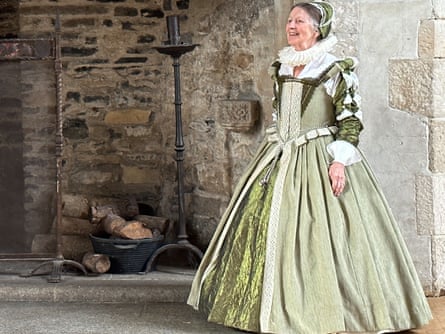
She believes the popularity of her shows is down to the way they allow her to bring the period and the person to life for the audience. For children in particular, “if they can walk around you and have a really good look at what you’re wearing, it gets through to them much more than a picture on a wall”. But, she says, they ask the hardest questions: “Can you sit down, and how do you go to the toilet? I always say: ‘You make provision beneath your skirts …’”
Now 71, Griggs performed 38 shows in 2022, and she’s planning more in 2023, often accompanied by “peasant David”. Her husband, whose health has improved, is a keen folk singer who sometimes contributes Elizabethan songs to the shows, and is on hand for lady’s maid duties, helping Griggs into and out of her regalia. “He’s OK enough to be a peasant!” laughs Griggs.
“We do tend to travel to events with me fully dressed,” she says, remembering “hopeless” attempts to change in tiny toilets. “He drives us all over the West Country and I’m sitting there as the Lady, waving to everyone. I did turn up to vote in full costume a few years ago – we were on our way somewhere and it was voting day; that caused a bit of a stir.”
The rest of her family, she says, are “surprised, amazed, worried because some of them think I’m overdoing it, but delighted I’m doing something that’s rewarding – a whole range of reactions”.
Griggs’s deep immersion in the period and the person also led her to write a novel dramatising Lady Katherine’s life. A Woman of Noble Wit was published in 2021. It felt important, she says, to shine more light on an exceptional woman overshadowed by her famous male relations. “‘History’ says it all: it’s his story. I want to try to tell her story.” She’s now working on a second book, about a lesser-known woman in the same extended family.
Creating and wearing authentic costumes of the era is a vital part of the research and the writing, she says, recalling Hilary Mantel’s comment that to write historical fiction you need to live in your character’s world. “It’s that thing of being able to walk in their shoes and feel what it was like. It tells you things you couldn’t read in a book: you might write about someone running up a spiral staircase but if you’re dressed like that, it’s really quite difficult!”

